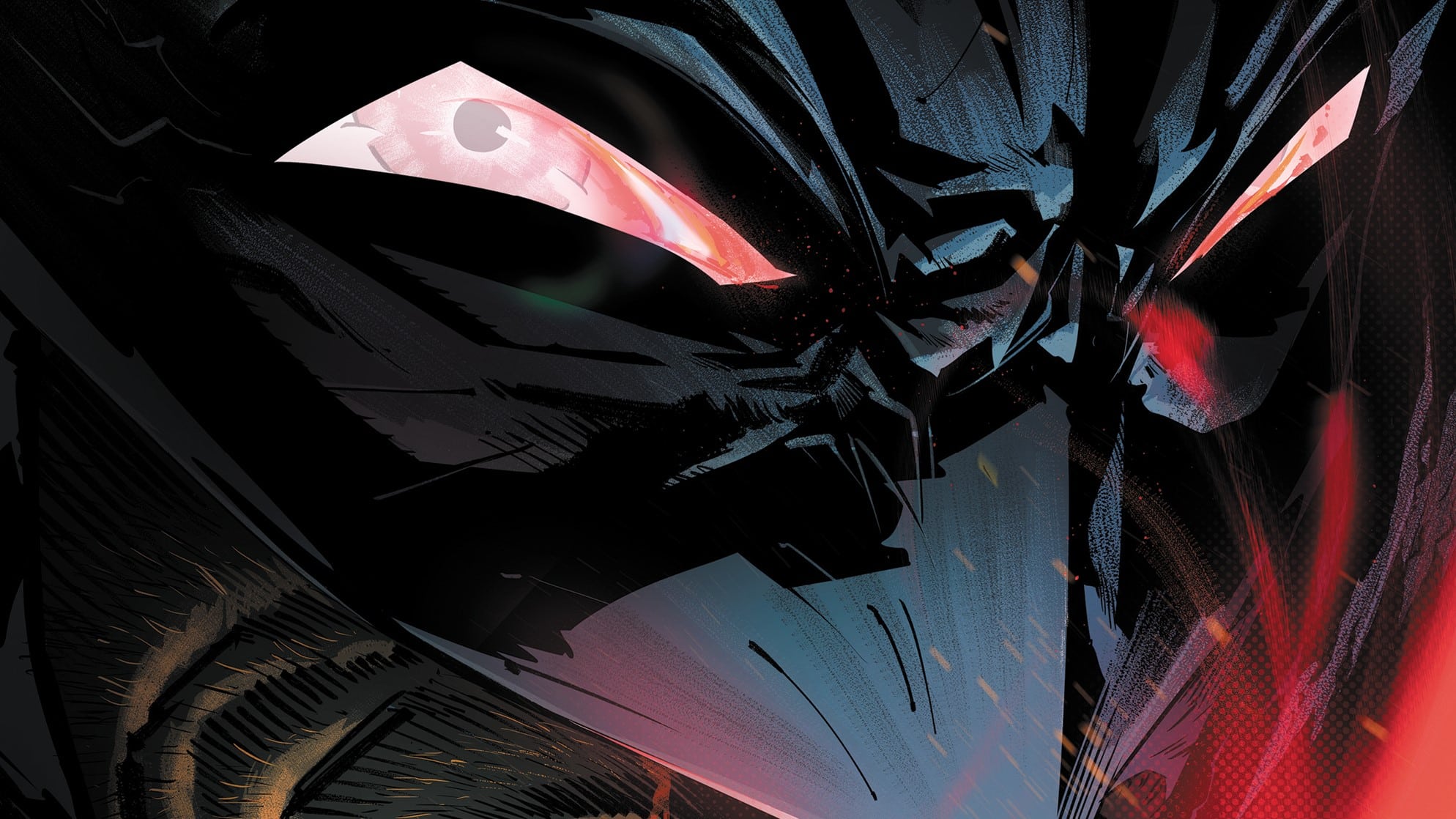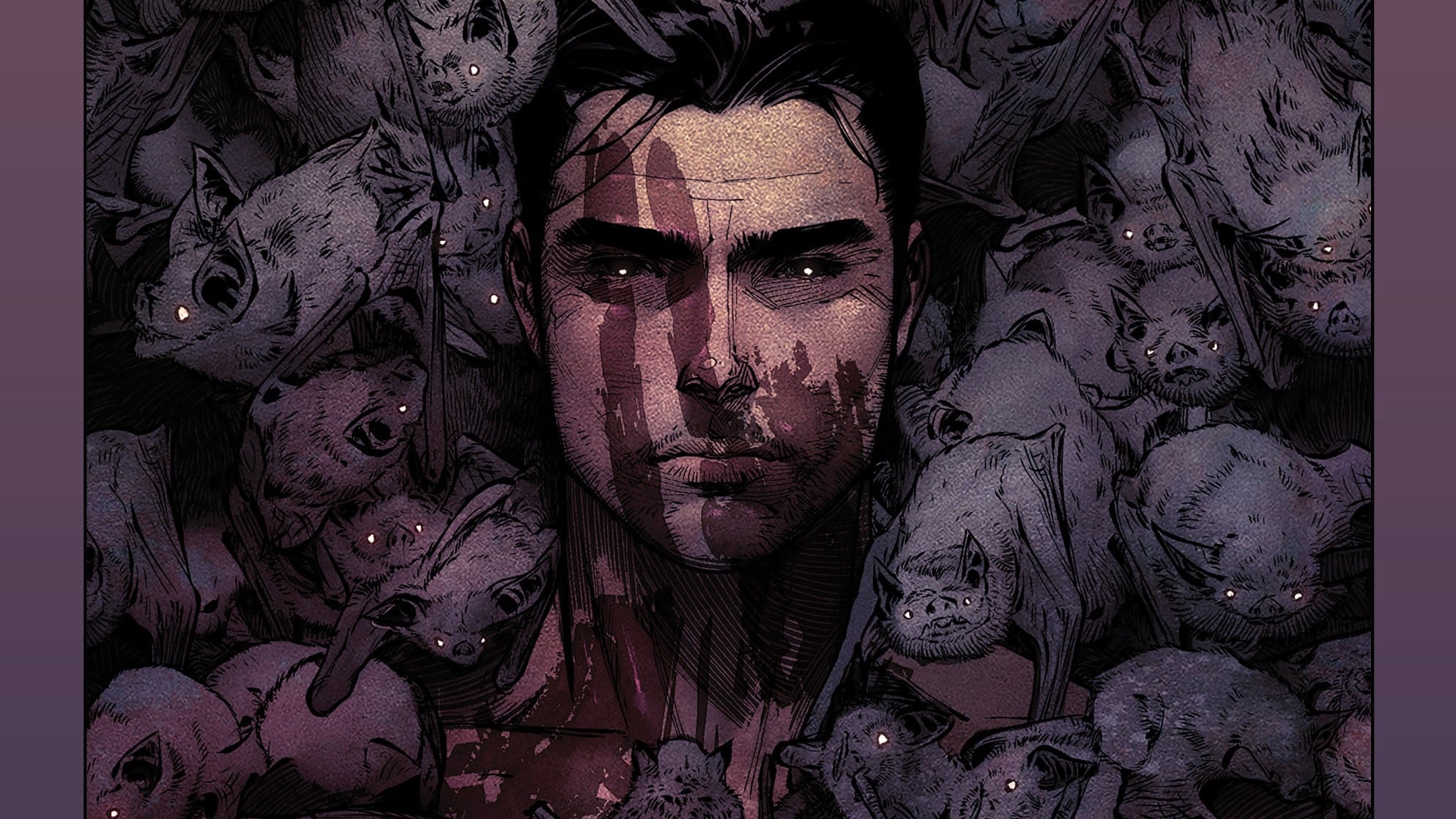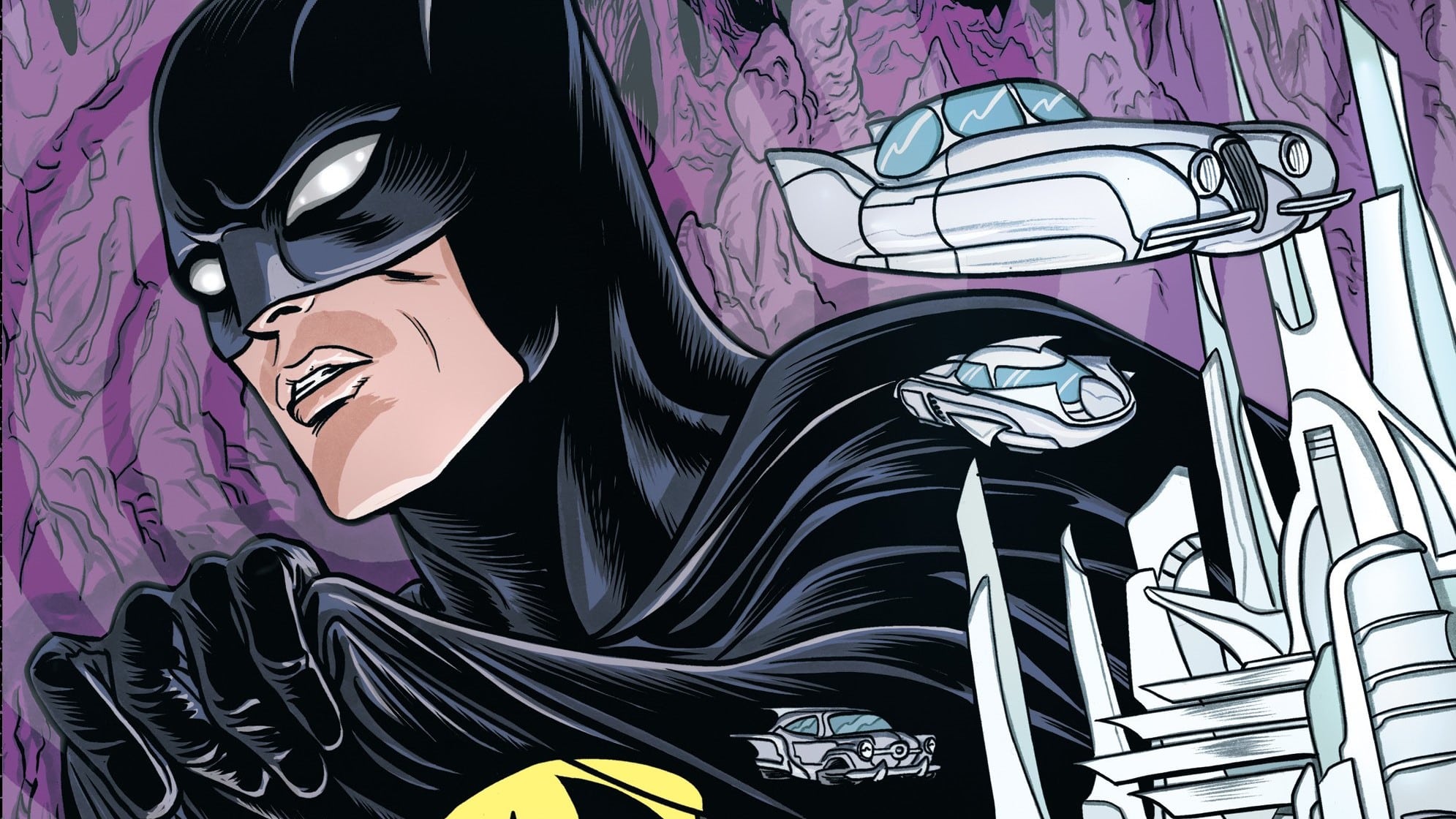It’s the Batman of Zur-En-Arrh vs. Failsafe in Batman #127, written by Chip Zdarsky, drawn by Jorge Jimenez, colored by Tomeu Morey and lettered by Clayton Cowles. In the backup, Catwoman’s story ends with a trip to Metropolis and a meeting with a familiar florist in a story written by Zdarsky, drawn by Belen Ortega, colored by Luis Guerrero and lettered by Cowles.
It’s the final showdown between Batman and the sentient city of Gotham in Batman Beyond: Neo-Year #6, written by Collin Kelly and Jackson Lanzing, drawn by Max Dunbar, colored by Romulo Fajardo Jr. and lettered by Aditya Bidikar.
Artist Lee Bermejo writes a strange and mysterious letter to the Dark Knight in Batman: Dear Detective, written, drawn and colored by Bermejo and lettered by Jared Fletcher.
Matt Lazorwitz: Hey, so I wrote this week’s editorial for the CXF newsletter about the 30th anniversary of Batman: The Animated Series. And every time I write 30th, that painting of me in the attic grows a little bit older.
Will Nevin: It was a good ass read, Brother Matt — people should sign up for the newsletter already. And it just made me more excited to sit down for Mask of the Phantasm for our bonus episode.
Zur-En-Arrh

Matt: See, we should have had more faith in Chip. That whole soldiers thing from last issue was clearly a setup for one of the best emotional beats in a Bat book in a very long time.
Will: We had all the crazy action of the last issue *plus* some substance. And Batman trapped in a dry well in his brain. Quality stuff there, Chip — and, as you say, a really nice moment in which Batman demonstrates his emotional attachment to his “soldiers.” Here’s my question: Who was at the helm in the last issue? Did our Batman misspeak, or was it Zur-En-Arrh? And before we get any farther, how in the hell did Morrison come up with that name?
Matt: Silver Age nonsense. It actually dates to a story from 1958. And as for where they got it from? Probably drugs.
Will: Drugs! They do a body good. (Allegedly.)
Matt: As for who spoke, I think that can be chalked up to Bruce doing his whole keeping his emotional distance thing because that’s what he does, but this sequence shows just what is underneath. We said in this week’s podcast episode, actually: Batman wants the world, and sometimes himself, to think he’s a cold bastard, but he has a much warmer heart underneath that.
Will: Getting to the substance of the story, I thought it made so much sense to go back to Mark Waid’s “Tower of Babel” from JLA. That was a story about Batman devising failsafe plans in case any Justice Leaguers broke bad. In something exploring the idea of Batman’s own plan for what would happen if he went wrong, it’s a natural fit.
Matt: Zdarsky is absolutely using continuity the way it should be: He takes two stories, “Tower of Babel” and “Batman: RIP,” and uses elements from them without making it necessary reading, but rewarding old-time readers. He’s also putting those stories in conversation with each other. I love it.
Will: Ol’ Chippers is not punishing readers who aren’t totally up on everything either. One of the more tedious parts of, say, something like Metal is the constant feeling that you’re missing out. Zdarsky gives you the essence of those stories without belaboring them. Almost like he knows what he’s doing or something.
Matt: And again, since there is a ton of action here, Jorge Jimenez gets to play. The fight through Wayne Manor is dynamic and gorgeous. And credit to colorist Tomeu Morey for finding ways to use shadow and shade to keep the Zur-En-Arrh costume from completely burning out your retinas with sheer garishness.
Will: It ain’t the Silver Age anymore, is it?
Matt: And that is quite a last-page reveal. But how much you wanna bet Failsafe is powered by Kryptonite?
Will: If I’m trying to think along with Batman here, wouldn’t he assume the League would be unable to stop him? So maybe Failsafe is uber strong/tough/whatever, but it might not necessarily be unstoppable with the help of Superman or Flash or whoever.
Let’s talk backups. What is the all-time record of shortest period in the grave before bringing someone back from the dead? And what do you think we’ll see in “Zur-En-Arrh: Year One”?
Matt: I think this was Zdarsky intentionally lampshading comic book death. “He’s the Penguin. You know he’s not going to stay dead. You probably didn’t think he was dead to begin with. So here it is.” And he played it well. Penguin is written spot on, and his motivations make sense.
As for more Zur-En-Arrh? The jury is out on that one for me. That is a concept best used sparingly. I think spending a lot of time with it is going to dilute it and make the core concept of this unhinged Batman less effective and intimidating. But all of that is dependent on how Zdarsky treats it.
Will: Seems like he’s earned a bit of our trust, eh?
Matt: Indeed. We’ll just have to wait for next month.
Batman vs. Gotham

Matt: So, I have to say, this finale laid a lot of my quibbles about this series to rest. The book really pulled all the threads together in the end.
Will: It also spun the thing forward into a new series (miniseries?) for next year. Quite an impressive job of landing the plane.
Matt: This set up a whole new status quo for the series, and one that doesn’t contradict the old one. It’s a logical extension of the series, and with Terry burning the notebook he was writing his long journal entry to Bruce in, we get a passing of the torch moment, a moving beyond the shadow of his mentor moment, that felt earned.
Will: This is sorta related to the issue (I guess?), but how much breathing space do you think Terry needs to both tell his story and stay grounded in some kind of Batman mythos? If Bruce is totally gone, does the next series work?
Matt: That is a good question. I think Terry is a fully formed enough character in his own right that he can. Lanzing and Kelly have started giving him a new cast in this series, with Beam, Lumos and Gestalt, while keeping Barbara around as well. What will really make or break the next series is whether they (or whoever is writing it) can really move Terry in a new direction. The best Wally West stories, for example, aren’t ones where he forgets about Barry Allen, but ones where he’s not obsessed with proving himself to Barry’s memory. Let’s see what Gotham can be without Bruce Wayne.
Will: Not to totally change the subject, but I tell you a thing I really liked in this issue: Lumos being used like a total tool.
Matt: Yes! All along I’ve been wondering what Machievellian scheme Lumos was working, just as Terry was in this issue. And the answer? None! He was just Gotham’s chump, something the AI was using for its own devices. Not everything is part of some grand conspiracy, and sometimes the evil billionaire isn’t so much evil as just a conceited jerk.
Will: I need more baddies to be total chumps in the end, Matt.
Matt: What I’m curious about is where Terry goes now that he’s unmasked himself to Lumos. That seems like a beat that needs to be explored a lot in the next series, especially since Lumos is a narcissist who has a mad-on for Batman, and I’d wager he’s the vindictive type.
Will: It’s certainly telling that we see Lumos in the clink and not blown into little tiny bits of light. I’ll see that bet and counter with one that says we’ll see him again down the road. Is the future of Batman Beyond one without a mask? Or do you think that final page was more about Terry being at peace with being Terry?
Matt: I think the latter. This whole series has been about Terry coming to terms with who he is in and out of the suit, which makes it a great way to start this new direction.
A Hate Letter to Batman

Matt: Brother Will, what did we just read?
Will: Uhhhh … a bunch of cool pinups? I’m not sure.
Matt: Yeah, that seems like it. This is an art book. The letter that frames the pin-ups is sure something, with its built-in cipher, but this isn’t going to be a revelation to any longtime Batman fan. It’s a neat trick, stringing the pinups together to make a pseudo narrative, but I don’t think it works in every case. Or most cases.
Will: And let’s be clear: The art here is really great. Ultra-realism at its finest. I’m not sure if it would work in a traditional sequential story (maybe it would feel more like John Byrne’s weird Star Trek picture books), but it sure is pretty to look at. But as a comic? As something that tells a story? I ain’t real sure that this does it.
Matt: And it’s not exactly revelatory. Batman’s greatest nemesis, who is writing this purple prose letter? Crime itself. It’s not exactly the first time I’ve seen that as a concept.
Will: Really, what else is there to say about this? It works as a coffee table book. That may be about it.
Bat-miscellany
- Patreon backer and friend of the show Josh Weil returns to talk about Green Arrow, one of his favorite characters, and Batman team-ups in this week’s BatChat podcast.







